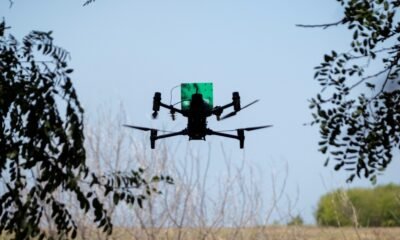INTERNACIONAL
A drone for every soldier in army of the future, Driscoll says
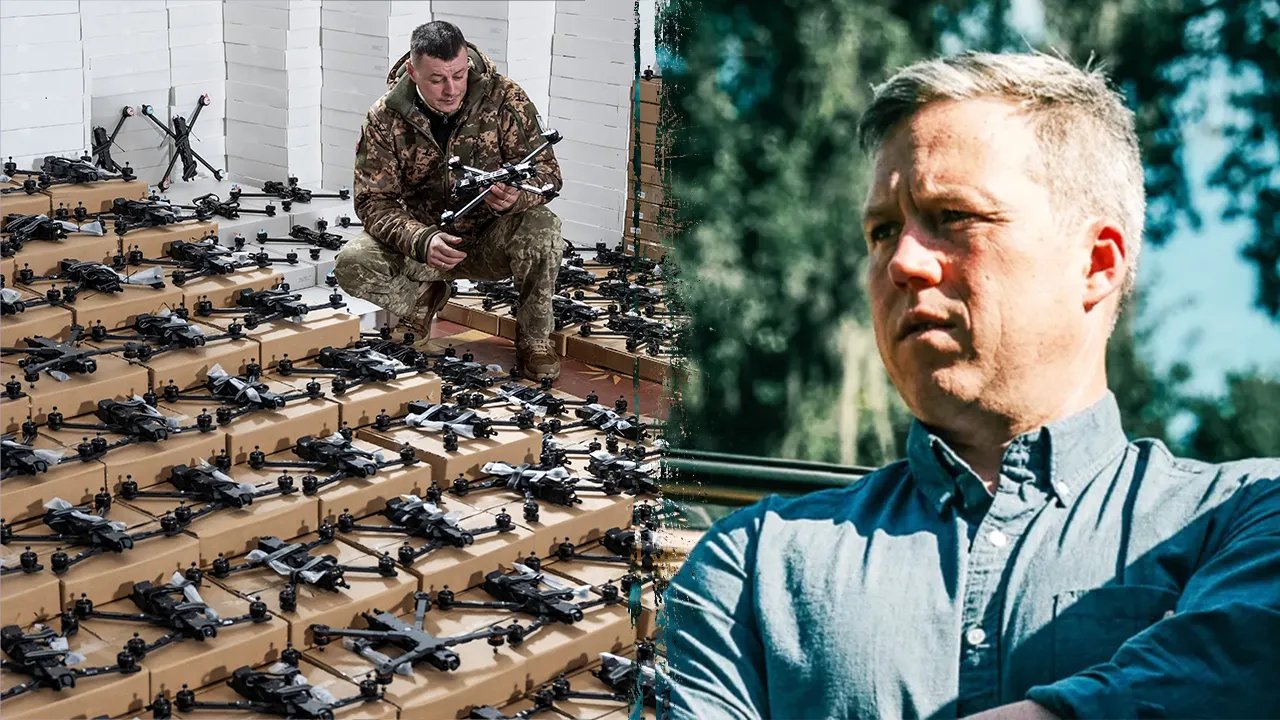
NEWYou can now listen to Fox News articles!
The Army is rapidly developing small, first-person-view drones — the same kind that have proven devastatingly effective in Ukraine — and envisions a future where «every infantryman will have a drone with them,» according to Army Secretary Dan Driscoll.
«We’re doing essentially a call to arms where we are ingesting the lessons being learned in Ukraine,» Driscoll told a small group of reporters on the sidelines of the Association of the United States Army (AUSA) annual conference. «Ukraine was able to take out almost $10 billion worth of Russian equipment with $100,000 worth of drones.»
He added that the Army’s elite units are already planning around drones for every mission. «When you meet with our lead units like the Ranger Regiment or Delta Force,» he said, «they envision drones being a core part of every action they do.»
The remarks came during the Association of the United States Army’s annual conference in Washington, where hundreds of Army leaders met with defense executives showcasing the latest battlefield technology. The event — one of the Army’s largest industry gatherings — almost didn’t happen this year amid the government shutdown.
ARMY PUSHES BATTLEFIELD AI AS COUNTER-DRONE FIGHT TAKES CENTER STAGE
A Ukrainian serviceman inspects a first-person-view drone provided by the Come Back Alive foundation to a Ukrainian Airborne Brigade amid Russia’s attack on Ukraine in Kyiv on Feb. 14, 2024. (Viacheslav Ratynskyi/Reuters/File photo)
AUSA stepped in with a $1 million donation to cover travel costs and fly in Army officers from around the world, allowing the service to continue its meetings with industry and push ahead on modernization plans.
Driscoll said the Army sees drones and counter-drones as «different sides of the same coin,» noting that future soldiers will need to be proficient at both. «You can’t really defend against one without being an expert in the other,» he said.
The service is also developing defensive networks that merge sensors and interceptors to protect key assets from aerial threats. «We’re using new technologies like drones to create a sensing layer that, paired with interceptors, will essentially allow us to build mini ‘Iron Domes’ over protected assets,» Driscoll said.
PENTAGON EXPLORING COUNTER-DRONE SYSTEMS TO PREVENT INCURSIONS OVER NATIONAL SECURITY FACILITIES

Army Secretary Dan Driscoll (Spc. Luke Sullivan/75th Ranger Regiment)
He described this «drone-pervasive» vision as part of a sweeping modernization campaign that spans artificial intelligence, industrial reform, and energy resilience — all of which, he said, are necessary for the Army to operate in contested environments such as the Indo-Pacific.
In a separate but related effort, Driscoll and Energy Secretary Chris Wright unveiled the Janus Program, a next-generation energy initiative that would place small nuclear microreactors at Army bases across the United States. The goal: make installations self-sufficient in power and less dependent on vulnerable fuel convoys or overseas supply chains.
«These reactors will be commercially built and operated,» Driscoll said, «and they’ll give us the ability to provide resilient, secure, round-the-clock power at our most critical installations.»
ARMY’S NUCLEAR COMEBACK: SWEEPING NEW PROGRAM AIMS TO BREAK ‘TYRANNY OF FUEL’ AT BASES ACROSS THE GLOBE
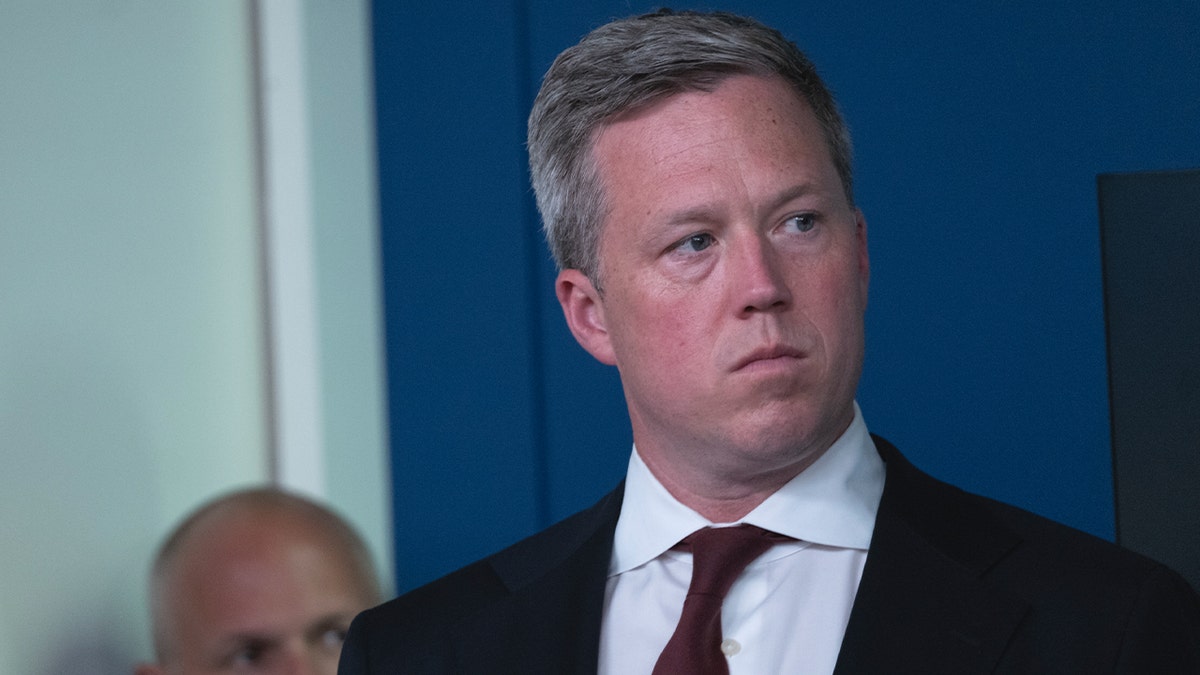
Army Secretary Dan Driscoll briefed reporters on Army modernization. (Cheriss May/Getty Images )
Wright said the program aims to replicate the reliability of nuclear propulsion in Navy submarines. «These engines are installed, they run the life of the submarine without refueling,» he said. «That changed the game for our Navy. And I think we can do the same thing for our Army with small reactors that can be deployed in all different settings.»
The Janus reactors, which will be developed in partnership with the Department of Energy, are designed to be small and transportable. Driscoll said each would be shielded with armor-grade materials — «the same material you put around a tank» — and protected by the same layered sensor and drone network envisioned for base defense.
One of the biggest hurdles to scaling microreactors is uranium enrichment. The reactors require high-assay low-enriched uranium (HALEU) — a higher concentration of uranium-235 than is currently produced for civilian use.
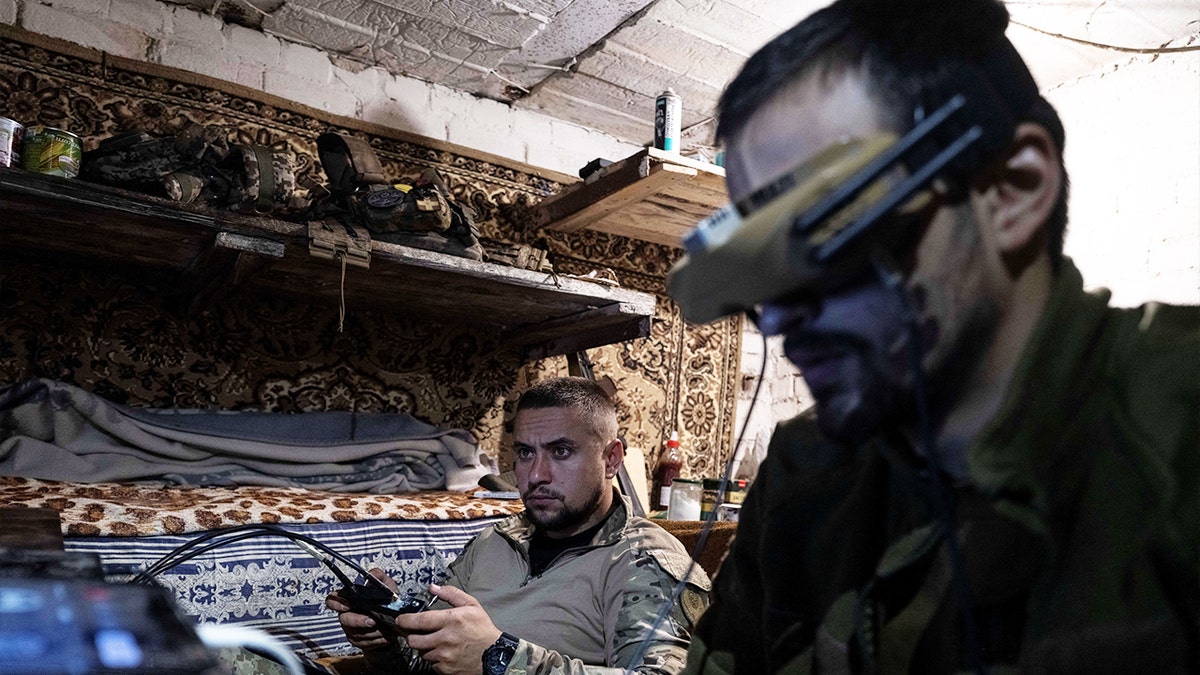
(Iryna Rybakova/Press Service of the 93rd Kholodnyi Yar Separate Mechanized Brigade of the Ukrainian Armed Forces/Handout via Reuters)
«Nobody produces it today,» Wright told reporters. «Congress allocated some money a couple of years ago, but it’s been sat on too long. We’ll be giving awards to accelerate the rise of American-owned enrichment capacity in America.»
Wright said the goal is to restore the domestic uranium supply chain and eliminate reliance on foreign sources. «We built 100 reactors quickly, providing 20 percent of U.S. electricity — and then it stagnated for decades,» he said. «Now nuclear provides around 5 percent of global energy output. This is deeply disappointing.»
CLICK HERE TO DOWNLOAD THE FOX NEWS APP
Driscoll acknowledged that safety and security will be top concerns as the Army moves forward. «From a cyber perspective, no one is going to allow a nuclear reactor that is remotely operated,» he said. «They’ll be connected by fiber optic — there’s no remote operation possibility.»
He added that the reactors’ small size and design make them unattractive proliferation targets. «These will be in the 50 U.S. states, not deployed to the front,» he said. «They’re small targets, with very small amounts of material inside.»
army,drones,armed forces topics,military tech
INTERNACIONAL
Coast Guard surges to Rio Grande in new border security mission, Operation River Wall

NEWYou can now listen to Fox News articles!
The Coast Guard is bolstering its forces along western Texas’ Rio Grande to support President Donald Trump’s border security mission as part of a «surge operation,» according to the service.
Trump declared a national emergency at the border in January, and his administration stood up Joint Task Force Southern Border in March to allow troops under the Department of War to assist with the Department of Homeland Security’s border mission.
Dubbed Operation River Wall, the Coast Guard deployment aims to counter the influx of drugs into the U.S., and to deter and interdict illegal immigrants along the 260-mile stretch of the river that is part of the U.S. border, the service announced Monday.
The Coast Guard said it is dispatching additional response boats, shallow watercraft, command and control assets, and tactical teams to the area to support the operation.
WATCH: COAST GUARD SEIZES COCAINE, SUSPECTED NARCO-TERRORISTS IN PACIFIC VIPER RAID
Secretary of Homeland Security Kristi Noem, right, pilots a U.S. Coast Guard response boat-small with the Maritime Security Response Team in San Diego, March 16, 2025. (Alex Brandon/Pool/AFP via Getty Images)
The service said it is leading operations it is conducting alongside U.S. Customs and Border Protection and the Department of War under U.S. Northern Command to advance Trump’s border priorities.
«U.S. Coast Guard is the best in the world at tactical boat operations and maritime interdiction at sea, along our coasts, and in riverine environments,» Adm. Kevin Lunday, acting commandant of the Coast Guard, said in a Monday statement. «Through Operation River Wall, the Coast Guard is controlling the U.S. southern border along the Rio Grande River in eastern Texas.»
COAST GUARD BURNS, SINKS SUSPECTED ‘DRUG BOAT,’ APPREHENDS 7 ALLEGED DRUG SMUGGLERS: VIDEO
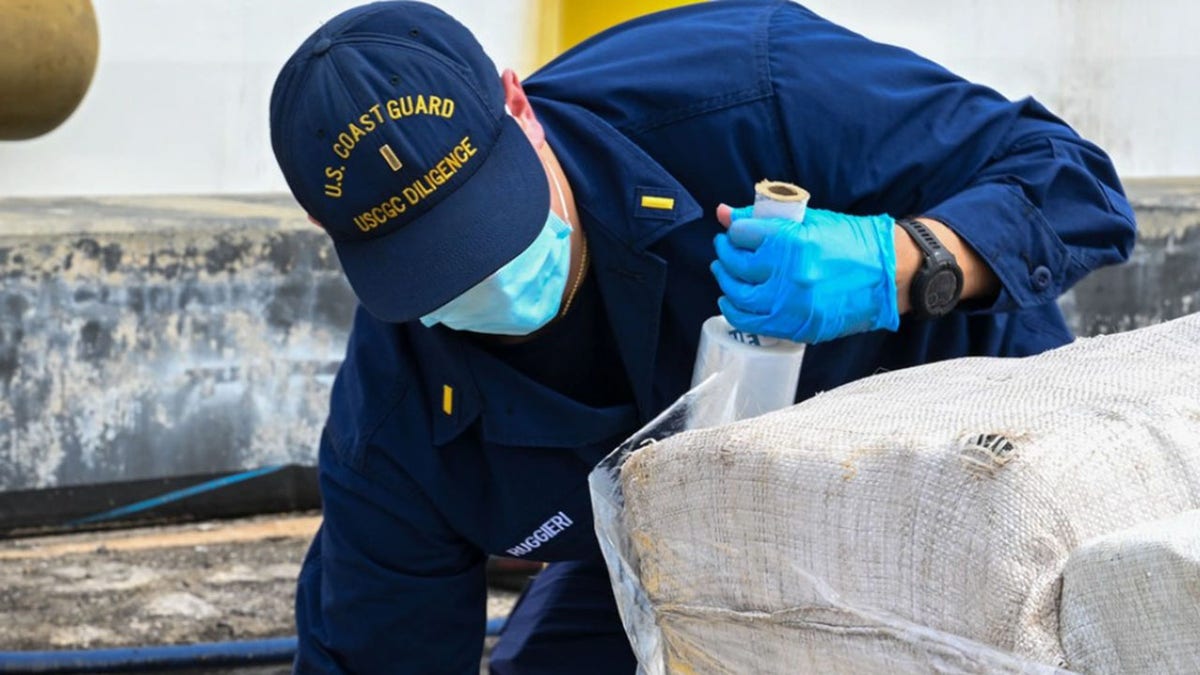
A Coast Guard crew member assigned to Coast Guard Cutter Diligence wraps bails of illicit narcotics during a drug offload at Coast Guard Sector St. Petersburg, Florida, Sept. 22, 2025. (Petty Officer 1st Class Riley Perkofski/Coast Guard)
It’s unclear exactly how many Coast Guard personnel and assets are involved in Operation River Wall, and the Coast Guard did not provide specifics, citing operational security concerns.
«We are deploying a range of assets, personnel, and equipment appropriate to maximize coverage of the Rio Grande River,» Coast Guard spokesperson Lt. Cmdr. Steve Roth said in a Tuesday statement to Fox News Digital. «Due to operational security concerns, we cannot provide specific details about deployment numbers or specific locations.»
However, the Coast Guard announced in March it was beefing up its operational presence along the southwest border for border security operations. Between January and March, the Coast Guard Southwest District announced it tripled its forces there.
The Pentagon said in July that roughly 8,500 troops are assigned to Joint Task Force Southern Border to provide backup to the Coast Guard and Border Patrol, and have been tasked with responding to security threats along the border.
COAST GUARD OVERHAUL TAKES OFF AMID TRUMP ADMINISTRATION’S IMMIGRATION, NARCOTICS CRACKDOWN

Coast Guard Cutter Seneca interdicted 5,500 pounds of cocaine northeast of the Galápagos Islands on Sept. 10, 2025, as part of Operation Pacific Viper. (Department of Homeland Security)
The Coast Guard has launched several high-profile operations in recent months. For example, the service kicked off Operation Pacific Viper in August — a joint effort between the Coast Guard and Navy aimed at countering the influx of illegal drugs to the U.S. as part of Trump’s larger effort to crack down on drug cartels.
So far, the Coast Guard has confiscated 100,000 pounds of cocaine in the Eastern Pacific Ocean since August, averaging 1,600 pounds of cocaine daily, according to the service.
homeland security,white house,immigration,drugs,coast guard
INTERNACIONAL
Murió Dionysis Savvopoulos, ícono de la música griega
El popular cantautor griego Dionysis Savvopoulos, conocido por sus letras alegóricas y profundamente poéticas que abordaban la política, la identidad y la sociedad griegas, falleció. Tenía 80 años.
Savvopoulos, figura destacada de la escena cultural e intelectual griega, falleció el martes por la noche, según anunció su familia en su cuenta oficial de redes sociales. El músico había estado hospitalizado en los últimos días y llevaba varios años luchando contra el cáncer.
Conocido por su apodo Nionios —un apodo común para Dionisio—, Savvopoulos saltó a la fama en la década de 1960, alcanzando fama nacional con sus canciones sutilmente revolucionarias durante la dictadura militar de 1967-1974. Fue encarcelado brevemente por la junta, y sus canciones se convirtieron en himnos de resistencia para jóvenes y disidentes en Grecia.
Los homenajes a Savvopoulos llegaron desde todo el mundo político y cultural griego.

“No quiero creerlo, pero nuestro Dionisio ya no está aquí”, publicó el primer ministro Kyriakos Mitsotakis en sus redes sociales. “Savvopoulos se ha ido, dejando una profunda huella en la música, las letras y el estilo público. Porque con su trabajo y su postura, demostró ser un compositor maravilloso. Un griego sensible”.
Nacido en Tesalónica el 2 de diciembre de 1944, Savvopoulos estudió Derecho, pero nunca terminó sus estudios. Se mudó a Atenas en 1963 y comenzó su carrera musical, actuando en pequeños clubes de la capital griega.
Sus canciones mezclaban múltiples géneros, incluida la música popular griega con elementos de rock y folk-rock, la música de músicos estadounidenses como Bob Dylan y Frank Zappa, así como la música tradicional griega.
Compuso tanto la música como la letra de la mayoría de sus canciones, con un profundo contenido político, romántico y humorístico. Su álbum debut, “Fortigo” (que significa “Camión”), se lanzó en 1966 y se convirtió en un gran éxito, catapultándolo a la fama con su combinación de comentarios políticos, influencias del rock y modismos folclóricos griegos.

Consolidó su éxito con su segundo álbum, “The Fool’s Garden”, publicado tres años después, en 1969, durante la dictadura militar. Savvopoulos se convirtió rápidamente en una de las principales voces de la disidencia artística griega, y para la caída de la junta en 1974, era considerado uno de los compositores griegos más importantes y originales de su generación.
En 1972, lanzó el álbum “The Dirty Bread”, que incluía la canción “The Angel Herald”, una adaptación de “The Wicked Messenger” de Bob Dylan, mientras que en 1997 lanzó “The Hotel”, un álbum dedicado a artistas que lo habían inspirado, incluidos Bob Dylan, Nick Cave, Jethro Tull, Van Morrison, Lou Reed, Lucio Dalla y otros.
“Fue un gran artista, un hombre extraordinario, apreciado por el pueblo griego por su personalidad, su obra y su contribución al arte”, declaró el presidente griego Konstantinos Tassoulas en un comunicado. “Inflexible, innovador y audaz, encarnó el espíritu de cuestionamiento de la forma más sensible y poética a través de obras que marcaron la historia de la canción griega y se convirtieron en hitos de la cultura moderna de nuestro país”.
Savvopoulos, un talentoso artista escénico, cautivaba a públicos de todas las edades con su música y narrativa. Continuó actuando a lo largo de su carrera, participando en conciertos en vivo tan recientemente como este año, cuando actuó en un festival de música de verano a las afueras de Atenas.

Savvopoulos publicó su autobiografía, “Por qué pasan los años”, a principios de 2025, donde habló abiertamente sobre su batalla contra el cáncer de pulmón, diagnosticado en 2020.
“La muerte es algo inaceptable. Pero una vez que la aceptas, es cuando empiezas a vivir”, dijo en una entrevista televisiva.
A Savvopoulos le sobreviven su esposa Aspa, dos hijos y dos nietos. Los detalles del funeral se anunciarán más adelante, según informó su familia.
(con información de AP)
INTERNACIONAL
How Louvre burglars obtained truck-mounted lift to make off with jewels worth more than $100M
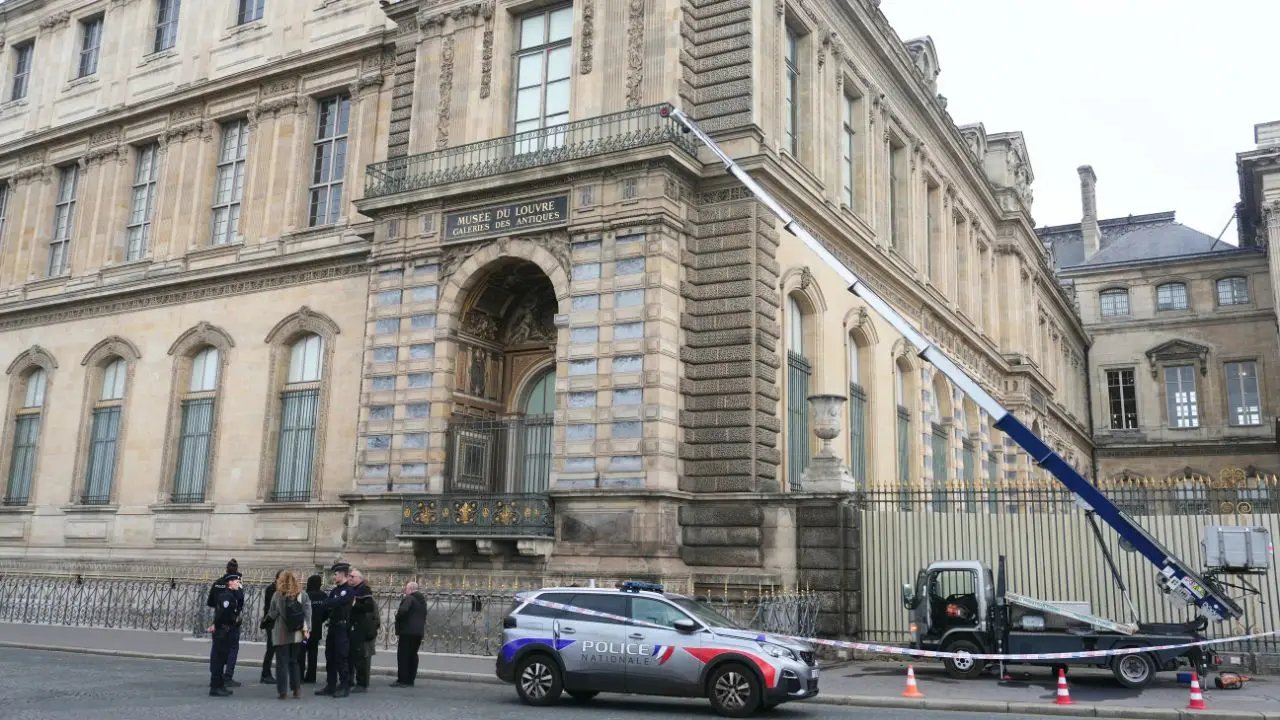
NEWYou can now listen to Fox News articles!
The thieves behind the daring Louvre Museum heist in Paris, France, appear to have used a truck-mounted moving lift — the kind professional movers use to hoist furniture up to apartment windows — in order to scale the building’s second floor, according to Laure Beccuau, the Paris prosecutor.
The burglars pretended they were hiring the freight lift for a move and when the equipment owner or representative arrived to verify the job, the suspects threatened that person, forcing them to hand it over and leave the scene, Beccuau said in an interview with RTL radio, according to The New York Times.
Authorities said the thieves spent less than four minutes inside the Louvre on Sunday morning. They allegedly wheeled the vehicle to the Seine-facing façade, a window was forced open, and two vitrines were smashed.
BRAZEN LOUVRE ROBBERY CREW MAY HAVE BEEN HIRED BY COLLECTOR, PROSECUTOR SAYS
Police secure the area outside the Louvre Museum in Paris, where burglars used a truck-mounted moving lift to reach a second-floor window and steal royal jewelry valued at more than $100 million. (Getty Images)
The thieves made away with a total of eight objects, including a sapphire diadem, necklace and single earring from a set linked to 19th-century queens Marie-Amélie and Hortense. The heist has prompted a national reckoning, with some officials comparing the shock to the 2019 burning of Notre-Dame cathedral.
They also stole an emerald necklace and earrings tied to Empress Marie-Louise, Napoleon Bonaparte’s second wife, and a reliquary brooch. Empress Eugénie’s diamond diadem and her large corsage-bow brooch — an imperial ensemble of rare craftsmanship — were also part of the loot.
WATCH: Louvre security was ‘not up to par’ after jewelry heist, author says
One piece — the emerald-set imperial crown of Empress Eugénie, with more than 1,300 diamonds — was later found outside the museum, damaged but recoverable.
Beccuau said the stolen items were valued at around $102.1 million and that the team investigating the heist has grown to 100 people.
The pieces were not insured, which is not uncommon for state collections because of the prohibitive costs, the Times reported, citing France’s culture ministry. The ministry reportedly said that the state «acts as its own insurer» when works are in their usual place of conservation «given the cost of taking out insurance» and the fact that «the accident rate is low.»
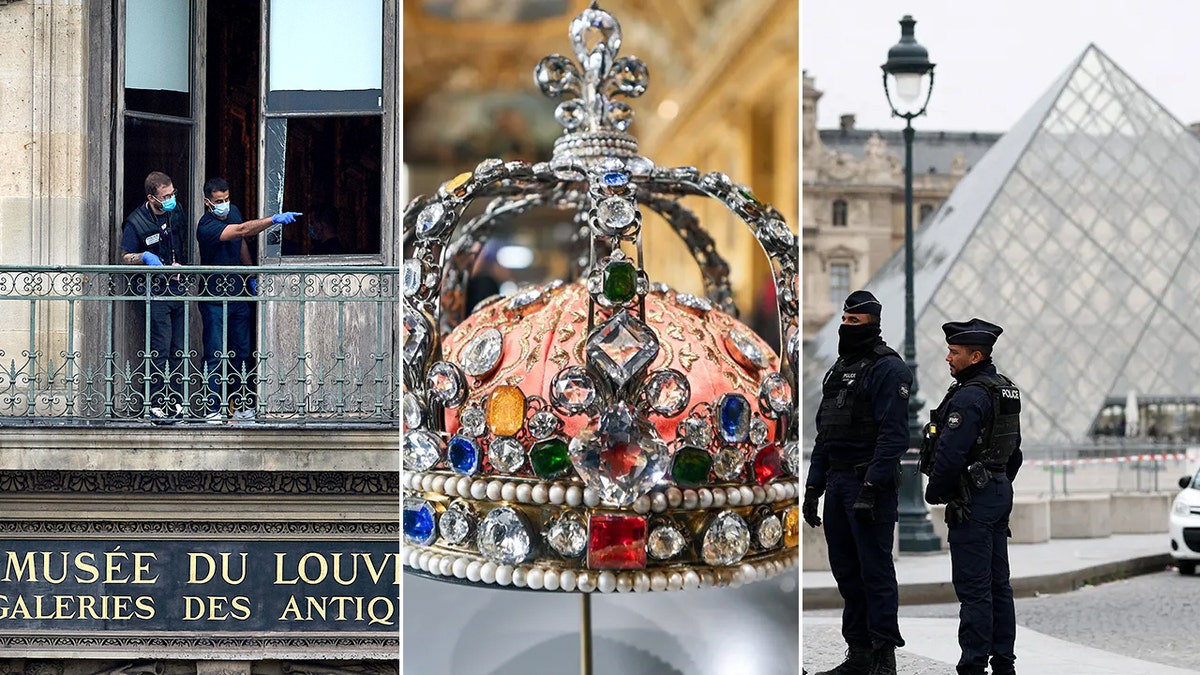
French Crime Scene Officers gesture as they examine the cut window and balcony of a gallery at the Louvre Museum on Oct. 19, 2025. (Kiran Ridley/Getty/Zhang Weiguo/VCG/AP/Zhang Weiguo/VCG/AP)
LOUVRE MUSEUM CLOSED AFTER ROBBERY, FRENCH OFFICIAL SAYS
Beccuau told local media that investigators believe the robbers may have been commissioned by a collector or were purely motivated by the value of the jewels and precious metals, Reuters reported.
«We’re looking at the hypothesis of organized crime,» Beccuau told BFMTV, noting that the thieves could be professionals operating on spec for a buyer.
Beccuau added that if a collector did commission the heist, there is hope that the stolen pieces will remain intact and well-preserved until recovered, the outlet reported. If the thieves acted independently, they may have targeted the jewels for their potential use in laundering criminal proceeds.
«Nowadays, anything can be linked to drug trafficking, given the significant sums of money obtained from drug trafficking,» Beccuau said, according to Reuters.
Investigators are keeping all leads open, but foreign interference has reportedly been largely ruled out in the case.
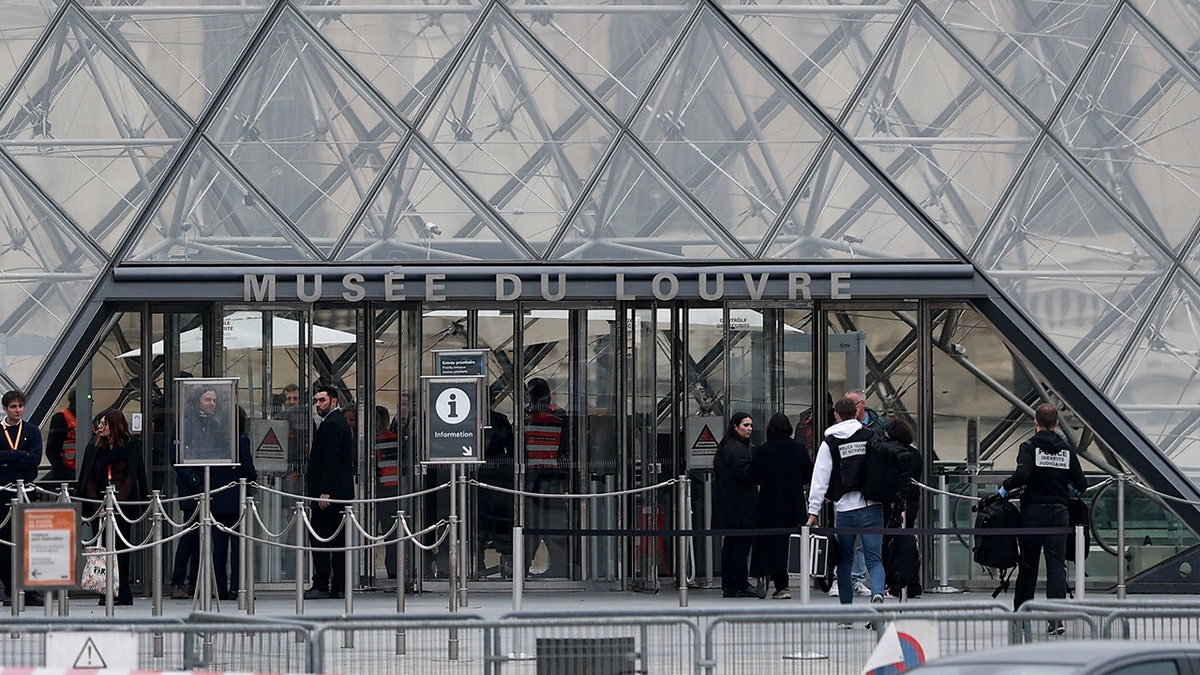
Forensic police officers arrive at the Louvre Museum after reports of a robbery in Paris, France, on Oct. 19, 2025. (Reuters/Gonzalo Fuentes)
CLICK HERE TO GET THE FOX NEWS APP
The Sunday morning smash-and-grab unfolded just 270 yards from the Mona Lisa.
Prosecutors revealed Monday that a vest, bottle of liquid and equipment left behind at the scene are now being examined.
The Louvre reopened Wednesday morning to crowds under its glass pyramid
Fox News Digital’s Bonny Chu, Ronn Blitzer and The Associated Press contributed to this report.
europe,france,world,crime world,police and law enforcement

 CHIMENTOS3 días ago
CHIMENTOS3 días agoLa cruda confesión del Turco Naim a 1 año de la separación de Emilia Attias: «Me di cuenta que hay que aprender a estar solo»

 CHIMENTOS2 días ago
CHIMENTOS2 días agoPampita recibió un video inesperado de su hija Blanca en el Día de la Madre y no pudo contener la emoción

 POLITICA2 días ago
POLITICA2 días agoDonald Trump habló sobre la ayuda económica de Estados Unidos: “La Argentina está peleando por su vida”











